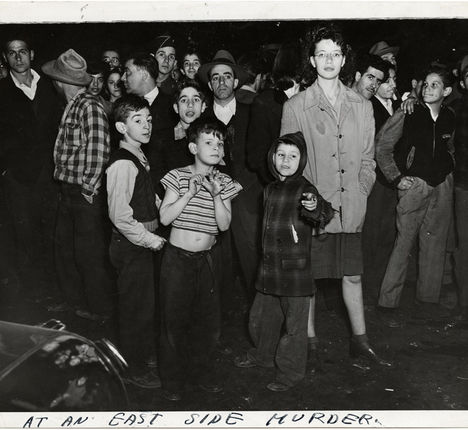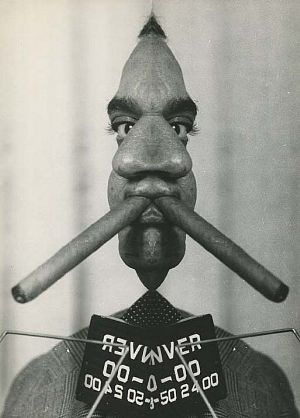WEEGEE: MURDER IS MY BUSINESS
International Center of Photography
1133 Sixth Ave. at West 43rd St.
Tuesday – Sunday through September 2, $12 (pay-what-you-wish Fridays 5:00 – 8:00)
212-857-0000
www.icp.org
A true New York City original, Ukraine-born Usher “Arthur” Fellig, better known as Weegee, revolutionized the art of photojournalism during the 1930s and ’40s. A freelance photographer who used a police-band radio to often get to crime scenes before the NYPD, Weegee snapped black-and-white pictures of murder victims, fires, and other tragedies, capturing not only the dead bodies but interested bystanders as well as friends and family of the deceased. His emotion-packed photos, which appeared in daily newspapers and magazines, gave viewers the feeling that they were there at the scene, his use of flash illuminating his subjects in the foreground against a dark, gritty background. ICP chief curator Brian Wallis has gathered together more than one hundred photos for the exciting exhibition “Weegee: Murder Is My Business.” Named after a show Weegee held of his work at the Photo League in 1941 — which is re-created here, along with a room in his studio — “Murder Is My Business” features shots of dead bodies lying lonely on the street, chalk outlines, rubbernecking crowds, firemen going into burning buildings, and a policeman holding a pair of rescued kittens. Weegee also took photos of New York nightlife and street scenes, including a New Year’s Eve party at Sammy’s Bar, two smiling Bowery entertainers, a Santa Claus balloon being inflated for the Thanksgiving Day Parade, and huge crowds at Coney Island. There is also a fun series, “Weegee Procedural,” in which Weegee photographed himself being handcuffed, taken to a station house, posing for a mug shot, and ending up behind bars. ICP debunks the idea that Weegee got his name from a Ouija board because of his ability to magically appear at scenes before anyone else; according to the exhibit text, the name actually came from when he was a squeegee boy at a photo house. Arranged thematically, the photos offer a thrilling look at a New York gone by and will have visitors crowding around not unlike the people seen in much of Weegee’s work. (ICP will be hosting a series of “Weegee’s Night Walks” through Times Square, the Bowery, the Lower East Side, Chinatown, and Lower Manhattan from February 24 through March 30; registration is $75.)
WEEGEE: NAKED CITY
Stephen Kasher Gallery
521 West 23rd St. between Tenth & Eleventh Aves.
Through February 25, free, 11:00 am – 6:00 pm
212-966-3978
www.stevenkasher.com
In conjunction with “Weegee: Murder Is My Business,” Steven Kasher Gallery in Chelsea is presenting “Weegee: Naked City,” comprising more than 125 prints that reveal Weegee’s wide-ranging subject matter. In his 1945 tome, Naked City, Weegee wrote, “For the pictures in this book I was on the scene; sometimes drawn there by some power I can’t explain, and I caught the New Yorkers with their masks off . . . not afraid to Laugh, Cry, or make Love. What I felt I photographed, laughing and crying with them.” The exhibit does include a handful of photos that are also in the ICP show, and it does not have any accompanying text, but there is still lots to see: shots of a woman in tears at a Frank Sinatra concert, famous clown Emmett Kelly sadly waving his hat, children crammed into a tenement penthouse, advertising signs, Stanley Kubrick on the set of Dr. Strangelove, a close-up of a woman’s stockinged leg at the Bowery Savings Bank, a big dog in a Greenwich Village hangout, and several experimental self-portraits using multiple images. Together, they offer a fabulous adventure through the New York of old. “The people in these photographs are real,” Weegee went on to explain in Naked City. “To me a photograph is a page from life, and that being the case, it must be real.”

